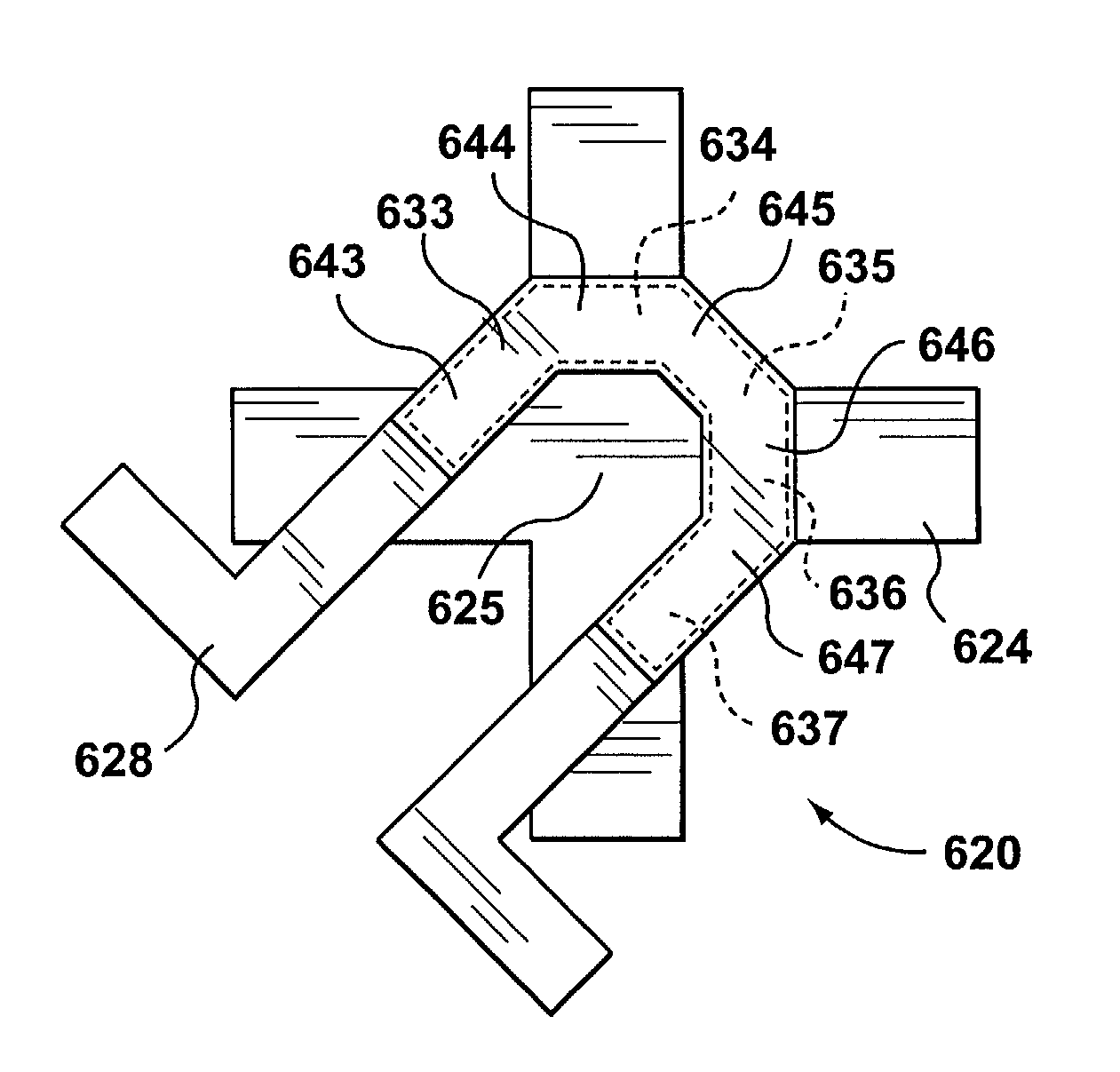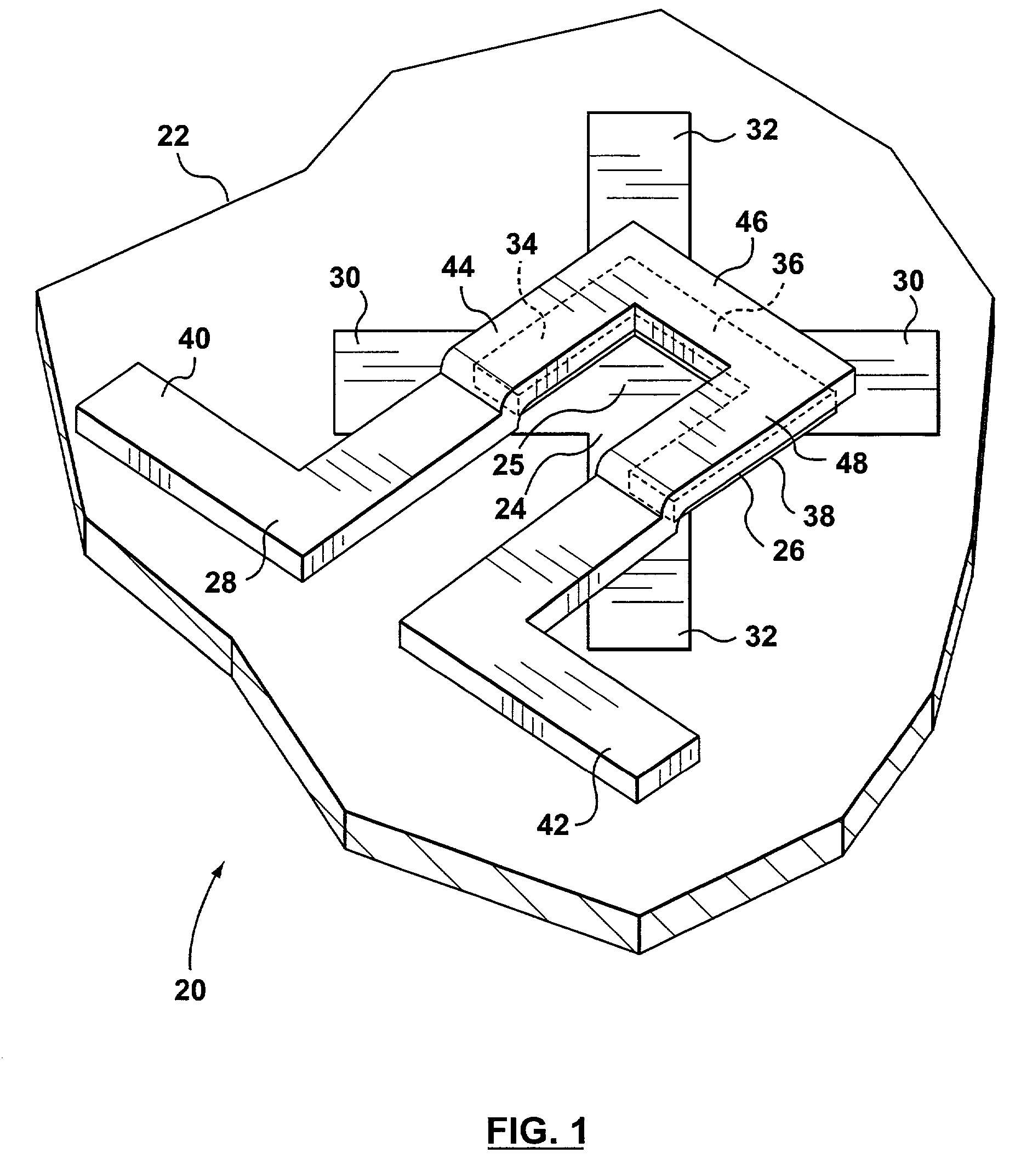Non-volatile magnetic memory device
a magnetic memory and non-volatile technology, applied in the field of magnetic memory devices, can solve the problems of complicating the fabrication process, prior art devices are typically not suitable for integration in a standard device integration process,
- Summary
- Abstract
- Description
- Claims
- Application Information
AI Technical Summary
Benefits of technology
Problems solved by technology
Method used
Image
Examples
second embodiment
[0073]FIG. 11 illustrates a memory cell 220 according to the present invention. Memory cell 220 has a substrate (not shown), a sensor 224 formed in substrate, three separate magnetic elements 226a, 226b and 226c and a write line 228. Magnetic elements 226a, 226b and 226c are generally rectangular. One segment 244, 246 or 248 of write line 228 is aligned with each of the magnetic elements. The three magnetic elements 226a, 226b and 226c are responsive to write signals transmitted between terminals 240 and 242 of write line 228 to store remnant magnetic fields in their hard directions of magnetization 252, 256 and 260. Like segments 34, 36 and 38 of magnetic element 26 (FIG. 1), the magnetic fields may have their south poles towards the sensing region 225 of sensor 224 in a first orientation or may have their north poles towards sensing region 225 in a second orientation. The orientation of cell 220 may be sensed using sensor 224 in the same way as sensor 24 of cell 20 (FIG. 1).
third embodiment
[0074]FIG. 12 illustrates a memory cell 320 according to the present invention. Memory cell 320 is similar to memory cell 220 (FIG. 11), except that magnetic elements 326a, 326b and 326c are not rectangular. Instead, 326a, 326b and 326c approximate the shape of magnetic element 26, with a gap at corner regions 321a and 321b. Write line 328 and sensor 324 are used in the same way as write line 28 and sensor 24 to write data to cell 320 and to sense the data stored in cell 320.
fourth embodiment
[0075]FIG. 13 illustrates a memory cell 420 according to the present invention. Memory cell 420 has three separate rectangular magnetic elements 426a, 426b and 426c, which are arranged with their shorter dimension towards sensing region 425.
PUM
 Login to View More
Login to View More Abstract
Description
Claims
Application Information
 Login to View More
Login to View More - R&D
- Intellectual Property
- Life Sciences
- Materials
- Tech Scout
- Unparalleled Data Quality
- Higher Quality Content
- 60% Fewer Hallucinations
Browse by: Latest US Patents, China's latest patents, Technical Efficacy Thesaurus, Application Domain, Technology Topic, Popular Technical Reports.
© 2025 PatSnap. All rights reserved.Legal|Privacy policy|Modern Slavery Act Transparency Statement|Sitemap|About US| Contact US: help@patsnap.com



